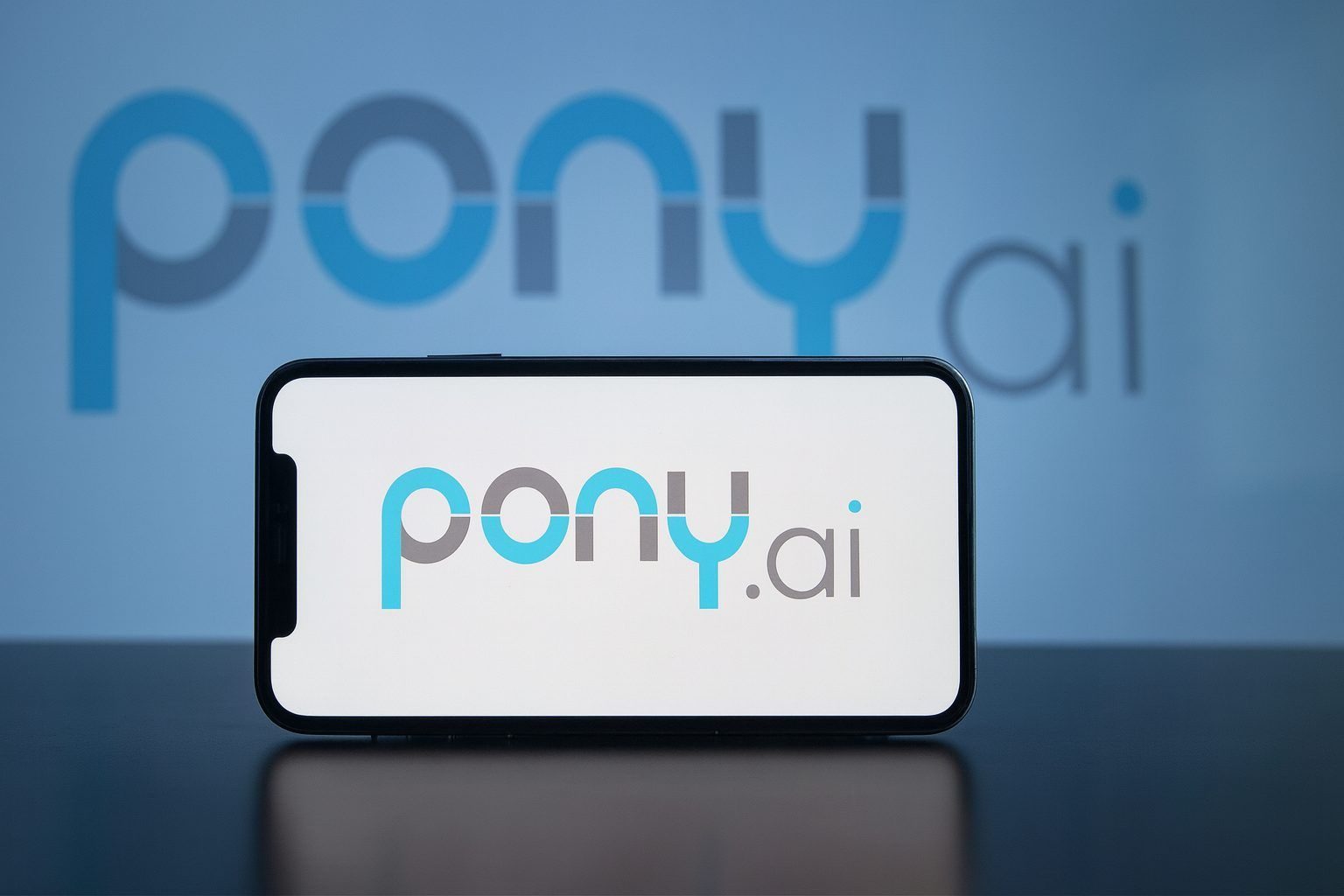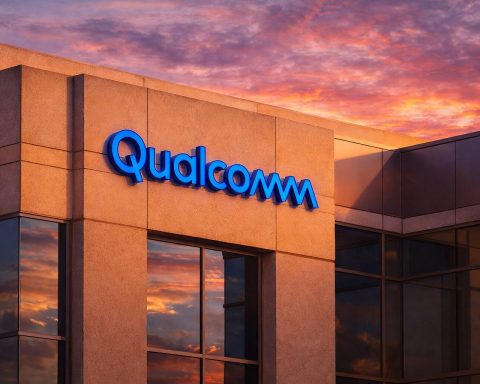Pony AI’s U.S.-listed shares (NASDAQ: PONY) jumped again on Tuesday, closing around $13.33, up about 5.9% on heavy volume of roughly 16.6 million shares. That builds on Monday’s 12.5% surge, leaving the stock up about 19% over the last two sessions. Even after the rally, PONY trades roughly 46% below its 52‑week high near $24.92, but more than triple its 52‑week low around $4.11. [1]
Today’s move follows Q3 2025 earnings and a detailed update on Pony AI’s robotaxi economics, fleet expansion, and dual Hong Kong listing — a mix of rapid revenue growth, improving unit economics, and still‑large losses that is fueling both enthusiasm and debate around PONY stock. [2]
PONY stock price action on November 25, 2025
According to real‑time quote and historical data:
- Closing price (Nov. 25, 2025): about $13.33
- Daily move:+0.74, or +5.88%
- Day’s range:$12.70 – $13.75
- Volume: around 16.55 million shares
- 52‑week range:$4.11 – $24.92 [3]
On Monday, Nov. 24, PONY closed at $12.59, up 12.51% on the day, after news of an “asset‑light” partnership with Sunlight Mobility to deploy its autonomous vehicles through a large Chinese mobility platform covering more than 180 cities. [4]
Taken together, the back‑to‑back moves suggest investors are reacting to a narrative that combines:
- Very fast top‑line growth
- Visible progress toward robotaxi profitability at the city level
- A more capital‑efficient expansion model
- And a much stronger balance sheet after Pony AI’s recent Hong Kong listing
Inside Pony AI’s Q3 2025 earnings
Pony AI reported its Q3 2025 results before Tuesday’s U.S. market open. The headline numbers:
- Revenue:US$25.4 million, up 72% year‑over‑year from about US$14.8 million in Q3 2024 [5]
- Gross margin: improved to 18.4%, versus single‑digit margins a year ago [6]
- Net loss: widened to US$61.6 million, from US$42.1 million in the prior‑year quarter, as R&D and expansion spending climbed sharply [7]
- Operating expenses: about US$74.3 million, up roughly 77% year‑over‑year [8]
Segment detail from the company’s earnings materials and press release shows where the growth is coming from: [9]
- Robotaxi & robotruck services:
- Robotaxi revenue grew roughly 89.5% year‑over‑year in Q3, driven by higher ride volumes and better fleet utilization.
- Licensing and applications:
- Revenue in this category (which includes Pony AI’s autonomous domain controller and software licenses) jumped 354.6% to about US$8.6 million.
- Overall revenue mix:
- Management highlighted robotaxis, autonomous trucks and technology licensing as the main growth engines.
Despite the strong growth, Pony AI remains firmly in “invest for scale” mode:
- Free cash outflow (operating cash flow plus capex) was about US$79.6 million for the quarter. [10]
- Cash and cash equivalents plus short‑term investments stood at roughly US$587.7 million at quarter‑end, down from around US$747.7 million the prior quarter, with about half of that decline tied to a one‑time strategic investment with partner Toyota to support the latest robotaxi platform. [11]
Put simply: revenue and margins are moving in the right direction, but absolute losses and cash burn are still high.
Robotaxi citywide break‑even and the 3,000‑vehicle plan
The most eye‑catching part of Pony AI’s Q3 update was not just the revenue growth, but what management said about unit economics and fleet scale.
From the Q3 2025 earnings highlights and call summary: [12]
- Pony AI achieved citywide unit economics break‑even for its Gen‑7 robotaxis in Guangzhou, based on a two‑week average through November 23, 2025.
- Management cited indicative figures of around:
- 23 orders per vehicle per day
- Approximately RMB 299 (about US$40+) in daily net revenue per vehicle
- A target remote‑assistance ratio of 1 operator per 30 vehicles, a key driver of labor efficiency at scale.
- As of November 23, 2025, Pony AI’s global fleet totaled 961 vehicles, including 667 Gen‑7 robotaxis. [13]
- The company expects its fleet to surpass 1,000 vehicles by year‑end 2025 and has set a conservative target of more than 3,000 vehicles by the end of 2026. [14]
These metrics matter for PONY stock because they start to answer the key investor question in robotaxis: can this business ever make money at city scale?
Pony AI is effectively arguing that in at least one major Chinese city, Gen‑7 robotaxis can now pay for themselves on a unit basis, and that scaling from about 1,000 to over 3,000 vehicles — especially with more efficient asset ownership — should push more markets toward break‑even over the next couple of years. [15]
Asset‑light expansion and partnerships
One reason the market has cheered recent news is Pony AI’s shift toward an asset‑light rollout.
- On November 24, Pony AI announced a partnership with Sunlight Mobility, a major Chinese mobility platform covering more than 180 cities, to integrate its “Virtual Driver” technology and collaborate on autonomous vehicle fleet supply. [16]
- The arrangement is designed to:
- Use partners’ fleets and platforms rather than Pony AI owning every vehicle.
- Share economics while lowering capital intensity per deployed robotaxi.
- Accelerate scaling beyond a handful of pilot cities.
Outside mainland China, Pony AI has also expanded aggressively via partnerships: [17]
- Qatar: collaboration with Mowasalat to run robotaxi pilots on public roads in Doha.
- Singapore: partnership with ComfortDelGro to launch autonomous rides in the Punggol district once regulators sign off.
- Europe: a recent memorandum of understanding with Stellantis to jointly develop and test Level 4 robotaxis in Europe, starting in Luxembourg and expanding to other cities from 2026.
The message to investors: Pony AI wants to scale faster using other people’s cars and networks, while keeping its focus on software, system integration, and operations.
Dual Hong Kong listing strengthens the balance sheet
Alongside earnings, investors are still digesting the impact of Pony AI’s recent dual primary listing in Hong Kong.
Key points from company and news reports: [18]
- Pony AI listed on the Main Board of the Hong Kong Stock Exchange on November 6, 2025, under ticker 2026, creating a dual listing with Nasdaq.
- The Hong Kong IPO raised over US$800 million, with total gross proceeds potentially nearing US$993 million if the over‑allotment option is fully exercised — described as the largest autonomous‑driving IPO of 2025 in Hong Kong.
- Hong Kong–listed shares recently traded around HK$96.2, up roughly 9.7% over the past 24 hours, though still well below their early‑November highs. [19]
This fresh capital, layered on top of Pony AI’s cash and short‑term investments, gives the company more runway to fund:
- Mass production of Gen‑7 robotaxis
- Expansion into new cities and regions
- The rollout of its Gen‑4 autonomous truck lineup announced earlier this month, aimed at large‑scale deployment in 2026. [20]
How Wall Street views PONY stock right now
Analyst sentiment toward PONY stock remains broadly positive but not unanimous.
From recent coverage and data aggregators: [21]
- Goldman Sachs raised its price target on Pony AI from $24.50 to $27.70 in late September, maintaining a Buy rating. The bank pointed to:
- The rollout of Gen‑7 robotaxis in multiple Chinese cities
- Extended service hours (up to 24/7 in some zones)
- Growing gross merchandise value (GMV) per vehicle
- Rapid fleet expansion with a target of 1,000 vehicles by the end of 2025
- Goldman also highlighted Pony AI’s unique status as the only robotaxi operator licensed for fully driverless commercial service across all four of China’s tier‑one cities: Beijing, Shanghai, Guangzhou and Shenzhen, plus its early‑stage deployments in Qatar and Singapore. [22]
- TipRanks currently shows a “Strong Buy” consensus on PONY based on dozens of analyst ratings, with an average price target near $29.53, implying roughly 120% upside from current levels. [23]
At the same time, some firms have more conservative targets, and the spread between bullish and cautious estimates underscores how uncertain the long‑term economics of robotaxis still are.
The bull case for PONY stock
Investors who are optimistic about PONY tend to focus on several themes:
- Explosive top‑line growth
Q3 revenue rose 72% year‑over‑year, with especially strong expansion in robotaxi and licensing revenue. [24] - Proof‑points on unit economics
Achieving citywide break‑even for Gen‑7 robotaxis in Guangzhou — with healthy ride volumes and targeted 1:30 remote assistance — suggests the model can work at scale if replicated in other cities. [25] - Technology and regulatory lead
Pony AI now holds fully driverless commercial robotaxi permits across all four major Chinese tier‑one cities and has logged tens of millions of autonomous kilometers, putting it among the global leaders in real‑world deployment. [26] - Global optionality
With partnerships in Europe, the Middle East, and Southeast Asia, Pony AI isn’t limited to the Chinese market. Deals with Stellantis, Mowasalat, ComfortDelGro, Uber and Bolt give it multiple entry points into new regions and customer bases. [27] - Stronger balance sheet
The dual listing in Hong Kong and associated capital raise significantly extend the company’s runway to fund growth and R&D without immediate need for additional dilutive offerings. [28]
For believers in autonomous mobility and AI‑driven transportation, Pony AI is increasingly viewed as one of the purest plays in the public markets.
The bear case and key risks
On the other side, skeptics point to several concerns that could weigh on PONY stock:
- Persistent, sizable losses
Net loss rose to US$61.6 million in Q3, and free cash outflow remained close to US$80 million for the quarter, even after the improvement in gross margin. [29] - Rising operating expenses
Operating expenses climbed about 77% year‑over‑year, driven largely by R&D and staff expansion. While that spending supports long‑term capability, it delays the path to profitability. [30] - Regulatory and geopolitical risk
Pony AI operates primarily in China and is expanding into markets where autonomous driving rules are still evolving. Shifts in safety regulations, data‑security rules, or U.S.–China relations could affect operations, listings, or investor sentiment. - Intense competition
Pony AI faces strong rivals including Baidu’s Apollo Go, WeRide, and traditional ride‑hailing platforms investing in autonomy. Several peers are also ramping fleets, testing in more cities and pursuing their own international expansions. [31] - Highly volatile stock
Since listing, PONY has already swung between about $4 and $25 in the past year, often moving double‑digits on news or sentiment alone. That volatility cuts both ways, but it raises risk for short‑term traders and leveraged investors. [32]
In short, Pony AI looks like a classic high‑growth, high‑risk AI play: the upside could be large if robotaxis scale profitably, but the path is uncertain and capital‑intensive.
What today’s move could mean for investors
From a market‑structure perspective, the last two sessions have:
- Repriced expectations after Pony AI delivered:
- Stronger‑than‑expected revenue growth
- Tangible evidence of improving unit economics
- A clear roadmap to more than 3,000 vehicles by 2026 [33]
- Partially repaired sentiment after a choppy autumn, especially around the Hong Kong listing and regulatory headlines.
- Left PONY’s valuation still well below prior peaks, but with much more visibility into its fleet scale and city‑level profitability.
For long‑term‑oriented investors, today’s action is less about whether $13‑and‑change is cheap or expensive in isolation, and more about whether you believe:
- Pony AI can replicate Guangzhou‑style break‑even across multiple large cities;
- Asset‑light partnerships and dual‑market listings can keep capital costs under control; and
- Its technology and regulatory lead are durable in the face of intense global competition.
If those theses hold, analysts’ bullish price targets in the mid‑ to high‑$20s might not look unreasonable. If they don’t, PONY’s recent rallies could prove fleeting. [34]
Either way, PONY stock remains a volatile, speculative AI and robotaxi name, best approached with careful position sizing and a clear understanding of the risks. This article is for informational purposes only and does not constitute financial advice or a recommendation to buy or sell securities.
References
1. www.investing.com, 2. www.stocktitan.net, 3. www.investing.com, 4. www.stocktitan.net, 5. www.stocktitan.net, 6. www.stocktitan.net, 7. www.stocktitan.net, 8. www.stocktitan.net, 9. www.stocktitan.net, 10. www.stocktitan.net, 11. www.tipranks.com, 12. ca.investing.com, 13. www.stocktitan.net, 14. ca.investing.com, 15. ca.investing.com, 16. www.stocktitan.net, 17. www.stocktitan.net, 18. www.stocktitan.net, 19. www.tradingview.com, 20. www.stocktitan.net, 21. www.tipranks.com, 22. www.investing.com, 23. www.tipranks.com, 24. www.stocktitan.net, 25. ca.investing.com, 26. www.stocktitan.net, 27. www.tipranks.com, 28. ca.investing.com, 29. www.stocktitan.net, 30. www.stocktitan.net, 31. seekingalpha.com, 32. www.investing.com, 33. www.stocktitan.net, 34. www.tipranks.com








